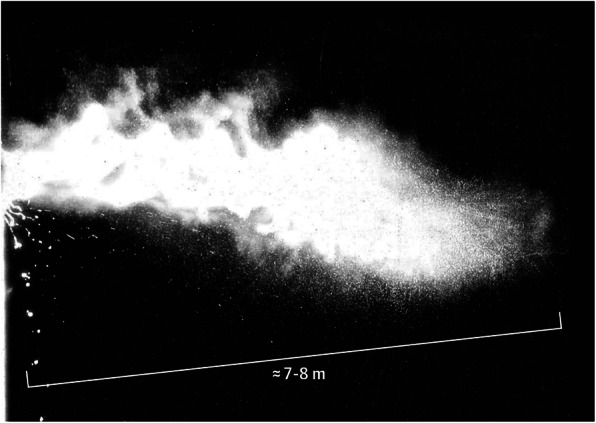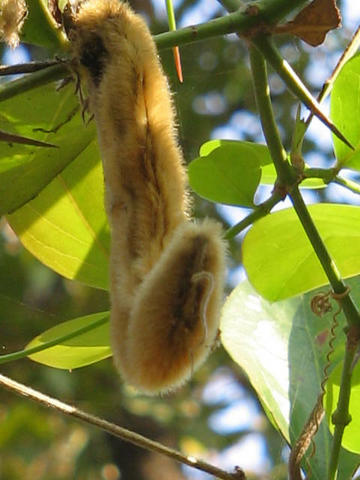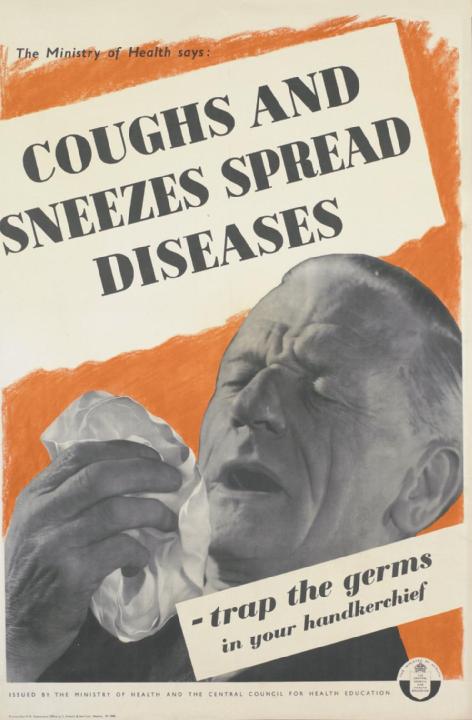|
Sneezing Powder
Sneezing powder is a group of powders or powder-like substances that induce sneezing when someone is exposed to them. This is usually done as a practical joke or prank to an unsuspecting victim. Sneezing powders containing ''Veratrum album'' alkaloids have been linked to poisoning, including upset stomach, fainting, slowed heart rate and low blood pressure. Children are especially vulnerable. An example of a (sneeze-inducing) agent is helenalin (the acetate is called angustibalin). The plant containing this chamissonolide is actually eponymously called sneezeweed. See also *Itching powder * List of practical joke topics * Photic sneeze reflex The photic sneeze reflex (also known as Autosomal Dominant Compelling Helio-Ophthalmic Outburst (ACHOO) syndrome or photoptarmosis, of the combining form from Ancient Greek φῶς, ''phōs'', "light" and πταρμός, ''ptarmós'', "sneeze", ... (sun sneezing), a genetic disorder References Sneeze Practical joke devices Powd ... [...More Info...] [...Related Items...] OR: [Wikipedia] [Google] [Baidu] |
Powder (substance)
A powder is a dry, bulk solid composed of many very fine particles that may flow freely when shaken or tilted. Powders are a special sub-class of granular materials, although the terms ''powder'' and ''granular'' are sometimes used to distinguish separate classes of material. In particular, ''powders'' refer to those granular materials that have the finer grain sizes, and that therefore have a greater tendency to form clumps when flowing. ''Granulars'' refers to the coarser granular materials that do not tend to form clumps except when wet. Types Many manufactured goods come in powder form, such as flour, sugar, ground coffee, powdered milk, copy machine toner, gunpowder, cosmetic powders, and some pharmaceuticals. In nature, dust, fine sand and snow, volcanic ash, and the top layer of the lunar regolith are also examples. Because of their importance to industry, medicine and earth science, powders have been studied in great detail by chemical engineers, mechanical engi ... [...More Info...] [...Related Items...] OR: [Wikipedia] [Google] [Baidu] |
Sneeze
A sneeze (also known as sternutation) is a semi-autonomous, convulsive expulsion of air from the lungs through the nose and mouth, usually caused by foreign particles irritating the nasal mucosa. A sneeze expels air forcibly from the mouth and nose in an explosive, spasmodic involuntary action. This action allows for mucus to escape through the nasal cavity. Sneezing is possibly linked to sudden exposure to bright light, sudden change (fall) in temperature, breeze of cold air, a particularly full stomach, exposure to allergens, or viral infection. Because sneezes can spread disease through infectious aerosol droplets, it is recommended to cover one's mouth and nose with the forearm, the inside of the elbow, a tissue or a handkerchief while sneezing. In addition to covering the mouth, looking down is also recommended in order to change the direction of the droplets spread and avoid high concentration in the human breathing heights. The function of sneezing is to expel mucus con ... [...More Info...] [...Related Items...] OR: [Wikipedia] [Google] [Baidu] |
Photic Sneeze Reflex
The photic sneeze reflex (also known as Autosomal Dominant Compelling Helio-Ophthalmic Outburst (ACHOO) syndrome or photoptarmosis, of the combining form from Ancient Greek φῶς, ''phōs'', "light" and πταρμός, ''ptarmós'', "sneeze", colloquially sun sneezing or photosneezia) is an inherited and congenital autosomal dominant reflex condition that causes sneezing in response to numerous stimuli, such as looking at bright lights or periocular (surrounding the eyeball) injection. The condition affects 18–35% of the world's population, but its exact mechanism of action is not well understood. Symptoms and signs The photic sneeze reflex manifests itself in the form of uncontrollable sneezing in response to a stimulus which would not produce a sneeze in people without the trait. The sneezes generally occur in bursts of 1 to 10 sneezes, followed by a refractory period that can be as long as 24 hours. Photic sneezing A photic sneeze results from exposure to a bright light ... [...More Info...] [...Related Items...] OR: [Wikipedia] [Google] [Baidu] |
List Of Practical Joke Topics
This is a list of practical joke topics (also known as a prank, gag, jape or shenanigan) which are mischievous tricks or jokes played on someone, typically causing the victim to experience embarrassment, perplexity, confusion, or discomfort. Practical jokes differ from confidence tricks or hoaxes in that the victim finds out, or is let in on the joke, rather than being fooled into handing over money or other valuables. Practical jokes or pranks are generally lighthearted, reversible and non-permanent, and aim to make the victim feel foolish or victimised to a degree, but may also involve cruelty and become a form of bullying if performed without appropriate finesse. Practical jokes 0–9 * 2004 Harvard–Yale prank A * Alhokm Baad Almozawla * April Fools' Day * List of April Fools' Day jokes B * Berners Street hoax * Bingo Shooting Device * Black fax C * Caltech–MIT rivalry * Candid Camera * Capping stunt * Josiah S. Carberry * Chewing gum bug * Chinese finger trap ... [...More Info...] [...Related Items...] OR: [Wikipedia] [Google] [Baidu] |
Itching Powder
Itching powder is a powder or powder-like substance that induces itching when applied onto human skin. This is usually done as a practical joke or prank to an unsuspecting victim. Description and uses The cause of the irritation can be mechanical, such as products containing ground rose hips.Albert MR. Novelty shop "itching powder." ''Australasian J Dermatology''. 1998 Aug;39(3):188–89. Another common ingredient is ''Mucuna pruriens'',G.V. Joglekar, M.B. Bhide J.H. Balwani. An experimental method for screening antipruritic agents. ''British Journal of Dermatology''. Volume 75 Issue 3 p. 117. March 1963 a type of legume that produces seedpods coated with thousands of detachable spicules (needle-like hairs). The spicules contain an enzyme, mucunain, that causes severe itching, and they have been sold commercially as itching powder. ''Mucuna pruriens'' has been used to test the efficacy of anti-itch drugs. The term "itching powder" is colloquial; there is no one specific source of ... [...More Info...] [...Related Items...] OR: [Wikipedia] [Google] [Baidu] |
Sneezeweed
Sneezeweed is a common name for several plants in the family Asteraceae and may refer to: *'' Achillea ptarmica'', with white flowers *'' Hymenoxys hoopesii'', with long yellow petals, native to western North America *Various species of ''Helenium ''Helenium'' is a genus of annuals and herbaceous perennial plants in the family Asteraceae, native to the Americas. They bear yellow or orange daisy-like composite flowers. A number of these species (particularly ''Helenium autumnale'') have ...'', with short yellow petals, native to North and Central America *In Australia, '' Centipeda cunninghamii'' or "old man weed" is also referred to as common sneezeweed {{Plant common name ... [...More Info...] [...Related Items...] OR: [Wikipedia] [Google] [Baidu] |
Eponym
An eponym is a person, a place, or a thing after whom or which someone or something is, or is believed to be, named. The adjectives which are derived from the word eponym include ''eponymous'' and ''eponymic''. Usage of the word The term ''eponym'' functions in multiple related ways, all based on an explicit relationship between two named things. A person, place, or thing named after a particular person share an eponymous relationship. In this way, Elizabeth I of England is the eponym of the Elizabethan era. When Henry Ford is referred to as "the ''eponymous'' founder of the Ford Motor Company", his surname "Ford" serves as the eponym. The term also refers to the title character of a fictional work (such as Rocky Balboa of the Rocky film series, ''Rocky'' film series), as well as to ''self-titled'' works named after their creators (such as the album The Doors (album), ''The Doors'' by the band the Doors). Walt Disney created the eponymous The Walt Disney Company, Walt Disney Com ... [...More Info...] [...Related Items...] OR: [Wikipedia] [Google] [Baidu] |
Helenalin
Helenalin, or (-)-4-Hydroxy-4a,8-dimethyl-3,3a,4a,7a,8,9,9a-octahydroazuleno ,5-b/nowiki>furan-2,5-dione, is a toxic sesquiterpene lactone which can be found in several plants such as ''Arnica montana'' and '' Arnica chamissonis'' Helenalin is responsible for the toxicity of the ''Arnica'' spp. Although toxic, helenalin possesses some ''in vitro'' anti-inflammatory and anti-neoplastic effects. Helenalin can inhibit certain enzymes, such as 5-lipoxygenase and leukotriene C4 synthase. For this reason the compound or its derivatives may have potential medical applications. Structure and reactivity Helenalin belongs to the group of sesquiterpene lactones which are characterised by a lactone ring. Beside this ring, the structure of helenalin has two reactive groups (α-methylene-γ-butyrolactone and a cyclopentenone group) that can undergo a Michael addition. The double bond in the carbonyl group can undergo a Michael addition with a thiol group, also called a sulfhydryl group. The ... [...More Info...] [...Related Items...] OR: [Wikipedia] [Google] [Baidu] |
Sneezing
A sneeze (also known as sternutation) is a semi-autonomous, convulsive expulsion of air from the lungs through the nose and mouth, usually caused by foreign particles irritating the nasal mucosa. A sneeze expels air forcibly from the mouth and nose in an explosive, spasmodic involuntary action. This action allows for mucus to escape through the nasal cavity. Sneezing is possibly linked to sudden exposure to bright light, sudden change (fall) in temperature, breeze of cold air, a particularly full stomach, exposure to allergens, or viral infection. Because sneezes can spread disease through infectious aerosol droplets, it is recommended to cover one's mouth and nose with the forearm, the inside of the elbow, a tissue or a handkerchief while sneezing. In addition to covering the mouth, looking down is also recommended in order to change the direction of the droplets spread and avoid high concentration in the human breathing heights. The function of sneezing is to expel mucus c ... [...More Info...] [...Related Items...] OR: [Wikipedia] [Google] [Baidu] |
Hypotension
Hypotension is low blood pressure. Blood pressure is the force of blood pushing against the walls of the arteries as the heart pumps out blood. Blood pressure is indicated by two numbers, the systolic blood pressure (the top number) and the diastolic blood pressure (the bottom number), which are the maximum and minimum blood pressures, respectively. A systolic blood pressure of less than 90 millimeters of mercury (mmHg) or diastolic of less than 60 mmHg is generally considered to be hypotension. Different numbers apply to children. However, in practice, blood pressure is considered too low only if noticeable symptoms are present. Symptoms include dizziness or lightheadedness, confusion, feeling tired, weakness, headache, blurred vision, nausea, neck or back pain, an irregular heartbeat or feeling that the heart is skipping beats or fluttering, or fainting. Hypotension is the opposite of hypertension, which is high blood pressure. It is best understood as a physiological st ... [...More Info...] [...Related Items...] OR: [Wikipedia] [Google] [Baidu] |




